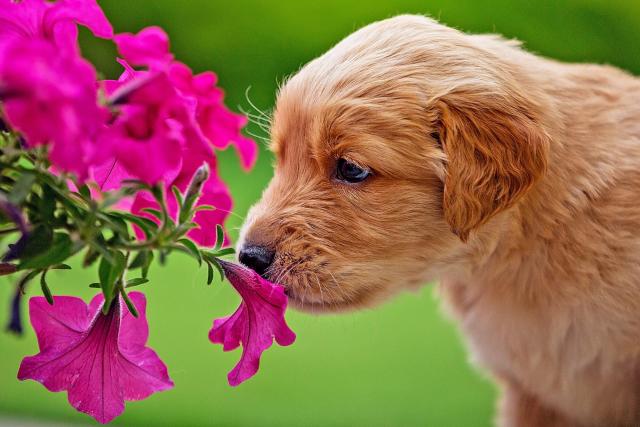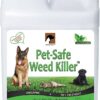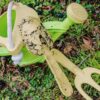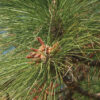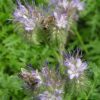Key Takeaways
Evergreen shrubs can be both beautiful and safe for puppies, offering year-round greenery and a playful environment.
When selecting shrubs, look for non-toxic varieties, sturdy structures, and those that can withstand puppy play.
Bottlebrush, Camellia, and Cypress are examples of puppy-safe evergreens that can enhance your garden.
Maintaining your puppy-safe garden involves regular pruning, organic mulching, and mindful watering practices.
Design your garden with strategic plant placement and containers to keep it fun and safe for your furry friend.
“38 Dog-Safe Plants, Shrubs, and Trees …” from finance.yahoo.com and used with no modifications.
Evergreen Enthusiasm: Puppy-Safe Plants for Year-Round Greenery
When you think about a garden that’s both eye-catching and safe for your furry friend, evergreen shrubs are a perfect choice. They’re not just pretty to look at; they provide a lush backdrop that’s always in season, and most importantly, they can be safe for curious puppies. The right evergreens can turn your garden into a year-round playground that’s both stimulating and secure for your playful pup.
Why Evergreens and Puppies Make the Perfect Pair
Evergreens are a win-win for pet owners. They keep their leaves all year, which means your garden stays green and inviting even when other plants have gone to sleep for the winter. Plus, they’re often robust enough to handle a little rough-and-tumble from your puppy. But, not all evergreens are created equal when it comes to pet safety. That’s why it’s crucial to pick the right ones.
Evergreens are also low-maintenance. They typically require less pruning and watering than other plants, which means you can spend more time playing fetch and less time fussing with your foliage. And because they’re always in leaf, they offer a constant shield against the outside world, keeping your puppy’s play area private and peaceful.
Criteria for Choosing Puppy-Safe Shrubs
Before you dash off to the nursery, let’s talk about what makes a shrub safe for puppies. First, it should be non-toxic. This means if your puppy decides to take a nibble, it won’t harm them. Second, it should be sturdy enough to stand up to a puppy’s energy, and lastly, it should be able to withstand a little ‘natural’ puppy behavior, like digging or marking.
Here’s what to look for:
Non-toxicity: Check that the plant is not harmful if ingested. The ASPCA provides a comprehensive list of plants that are safe for dogs.
Sturdiness: Opt for shrubs that can handle a bit of roughhousing without breaking.
Low maintenance: Choose plants that don’t require frequent care, so you have more time to spend with your pup.
Top Puppy-Safe Evergreens for Your Garden Delight
Now that we know what we’re looking for, let’s dive into some specific shrubs that will make your garden a puppy paradise.
Bottlebrush
The Bottlebrush is a fantastic choice for a puppy-friendly garden. Its vibrant red flowers are not just stunning; they’re also safe for your pooch. Plus, the Bottlebrush is known for its resilience and can stand up to the enthusiastic play of a young dog.
Non-toxic to dogs
Attracts birds and bees, which can be fun for your puppy to watch
Can handle the occasional ball or frisbee strike
Camellia
Camellias are another excellent option for pet owners. They have glossy leaves and beautiful flowers, and they’re non-toxic, so you don’t have to worry if your puppy decides to taste-test them.
Here’s why they’re great:
Safe for puppies to be around
Dense foliage provides a lush environment and hiding spots for play
Requires minimal maintenance, so you have more time to play
Cypress
Cypress trees are not only majestic; they’re also puppy-proof. Their tall, sturdy nature means they can act as a natural barrier for your garden, keeping your puppy in and prying eyes out. And yes, they’re safe for dogs too.
Benefits include selecting evergreen shrubs that are safe for your pets.
Non-toxic and safe for dogs
Evergreen foliage provides year-round privacy
Strong structure can withstand a puppy’s playful antics
Pyracantha
Also known as firethorn, Pyracantha is a thorny evergreen that’s perfect for keeping your garden borders secure. The good news is, despite its fierce name, Pyracantha is not harmful to puppies if they don’t ingest the thorns or berries. It’s a hardy plant that provides year-round interest with its bright berries and glossy leaves.
Has bright, bird-attracting berries that are non-toxic to dogs
Thorns can discourage puppies from venturing into areas where they shouldn’t be
Dense growth can provide a safe haven for puppies to explore
Caring for Your Puppy-Safe Garden
Once you’ve planted your puppy-safe evergreens, it’s important to care for them in a way that keeps your garden both beautiful and safe for your four-legged friend. Regular maintenance not only helps your plants thrive but also ensures that your garden remains a safe play space for your puppy.
Pruning Practices to Prevent Puppy Mishaps
Pruning is an essential part of garden maintenance, and when it comes to puppy safety, it’s even more crucial. Keeping your evergreens trimmed will prevent your puppy from chewing on any fallen or low-hanging branches. Always remove any dead or broken branches promptly, as these can be a hazard for playful pups.
Organic Mulching for Health and Safety
Organic mulching is beneficial for your plants and safe for your puppy. It helps retain moisture, suppresses weeds, and can provide a soft landing for playful paws. Avoid cocoa mulch, which can be toxic to dogs, and opt for safer alternatives like cedar or pine.
Watering Without Worry
Watering your plants is necessary, but it’s important to do it in a way that doesn’t create puddles or standing water, which can be a drinking hazard for your puppy. Ensure good drainage in your garden beds, and consider using a drip irrigation system to keep water off the leaves and directly in the soil.
Design Tips for a Puppy-Friendly Green Space
Designing your garden with your puppy in mind will ensure that it’s a space both you and your pet can enjoy. It’s not just about the plants you choose, but also about how you arrange them and the additional features you include.
Strategic Plant Placement
Think about plant placement in terms of puppy play patterns. Use sturdier shrubs around the borders of your garden to discourage your puppy from escaping. Place delicate plants and flowers where your puppy is less likely to run through or dig.
Using Containers to Your Advantage
Containers are a fantastic way to add interest to your garden while keeping certain plants out of your puppy’s reach. Elevated planters and hanging baskets are perfect for more delicate or toxic plants that you want to keep in your garden, but away from your furry friend.
Incorporating Play Areas Amongst the Foliage
Lastly, consider incorporating designated play areas in your garden. A clear, mulched area or a soft patch of grass can provide the perfect spot for a game of fetch or tug-of-war, away from your plants. You can even add some puppy-friendly toys or agility equipment to encourage active play in the safe zones of your garden.
Using Containers to Your Advantage
Container gardening is a smart strategy when you’re aiming to create a safe play environment for your puppy. By using pots and raised planters, you can keep more fragile plants out of reach. This means you can still enjoy the beauty of those plants without worrying about them being trampled or chewed on. Containers also offer the flexibility to rearrange your garden layout as your puppy grows or as seasons change.
Incorporating Play Areas Amongst the Foliage
Example: In my own garden, I’ve created a small ‘puppy zone’ bordered by sturdy shrubs like Boxwood and Dwarf Holly. Inside the zone, I’ve placed a variety of toys and a soft, sandy digging box that keeps my pup entertained and away from my flower beds.
Designating specific areas for play is essential in a puppy-friendly garden. Not only does it provide a safe space for your puppy to romp around, but it also helps to protect your plants. You can use natural elements like logs or stones to define these areas or set up a small fence around a soft grassy patch to signal to your puppy that it’s their area to enjoy.
Another great idea is to integrate a water feature that’s safe for puppies. A shallow pond or a sprinkler can provide hours of fun, especially on hot days. Just be sure that the water feature is shallow enough to prevent any risk of drowning and that it’s free of chemicals and algae.
Remember, the goal is to create a harmonious space that caters to the playful nature of puppies while keeping them safe and your plants intact.
Frequently Asked Questions (FAQ)
When it comes to creating a puppy-friendly garden, there are always plenty of questions. Let’s tackle some of the most common concerns to ensure you’re fully equipped to create a safe and enjoyable green space for your furry friend.
What Are the Signs that a Plant Could Be Toxic to My Puppy?
It’s crucial to recognize the signs of plant toxicity in puppies. Symptoms can include vomiting, diarrhea, excessive drooling, lethargy, or abnormal behavior. If you notice any of these signs and suspect your puppy has eaten a plant, contact your vet immediately. Always double-check the safety of a plant before adding it to your garden, using resources like the ASPCA’s list of toxic and non-toxic plants for dogs.
How Can I Prevent My Puppy from Digging in the Garden?
To discourage digging, provide your puppy with a designated digging area or a sandbox filled with soft soil or sand. Encourage them to use this space by burying toys or treats for them to find. Additionally, keep your puppy well-exercised and mentally stimulated to prevent boredom, which often leads to digging. For more ideas on keeping your puppy entertained, consider exploring interactive garden games that can help strengthen your bond and keep them occupied.
Another tip is to use dense ground covers or sturdy plants that are less appealing for dogs to dig up. You can also place chicken wire just below the surface of the soil around your plants, as this can deter digging without harming your puppy.
Are There Any Common Garden Mulches That Are Unsafe for Puppies?
Yes, some mulches can be hazardous. Cocoa mulch, in particular, contains theobromine and caffeine, which are toxic to dogs if ingested. Always opt for pet-safe mulches like cedar, pine, or hemlock, and avoid using any mulches that have been treated with chemicals or pesticides.
How Do I Know If a Shrub Is Truly Evergreen?
An evergreen shrub is one that retains its leaves throughout the year, never going completely bare. To confirm if a shrub is evergreen, research it before purchasing or consult with a knowledgeable staff member at your local garden center. They can provide you with information on the growth patterns and characteristics of the plant.
Can Puppies Be Trained to Avoid Certain Garden Areas?
With patience and consistent training, puppies can learn to avoid certain areas of the garden. Use positive reinforcement to reward them when they play in designated areas and redirect them gently if they wander into off-limits zones. Consider using barriers or planters to clearly delineate the spaces where your puppy is allowed to roam freely.
Remember, creating a puppy-friendly garden is about finding a balance. It’s about crafting a space that’s both aesthetically pleasing and safe for your puppy to explore. With the right plants, design, and care, you can have a vibrant garden that thrives year-round and a happy, healthy puppy who loves spending time in it.
